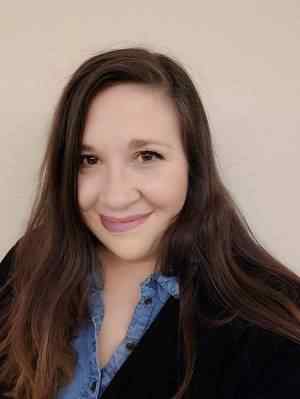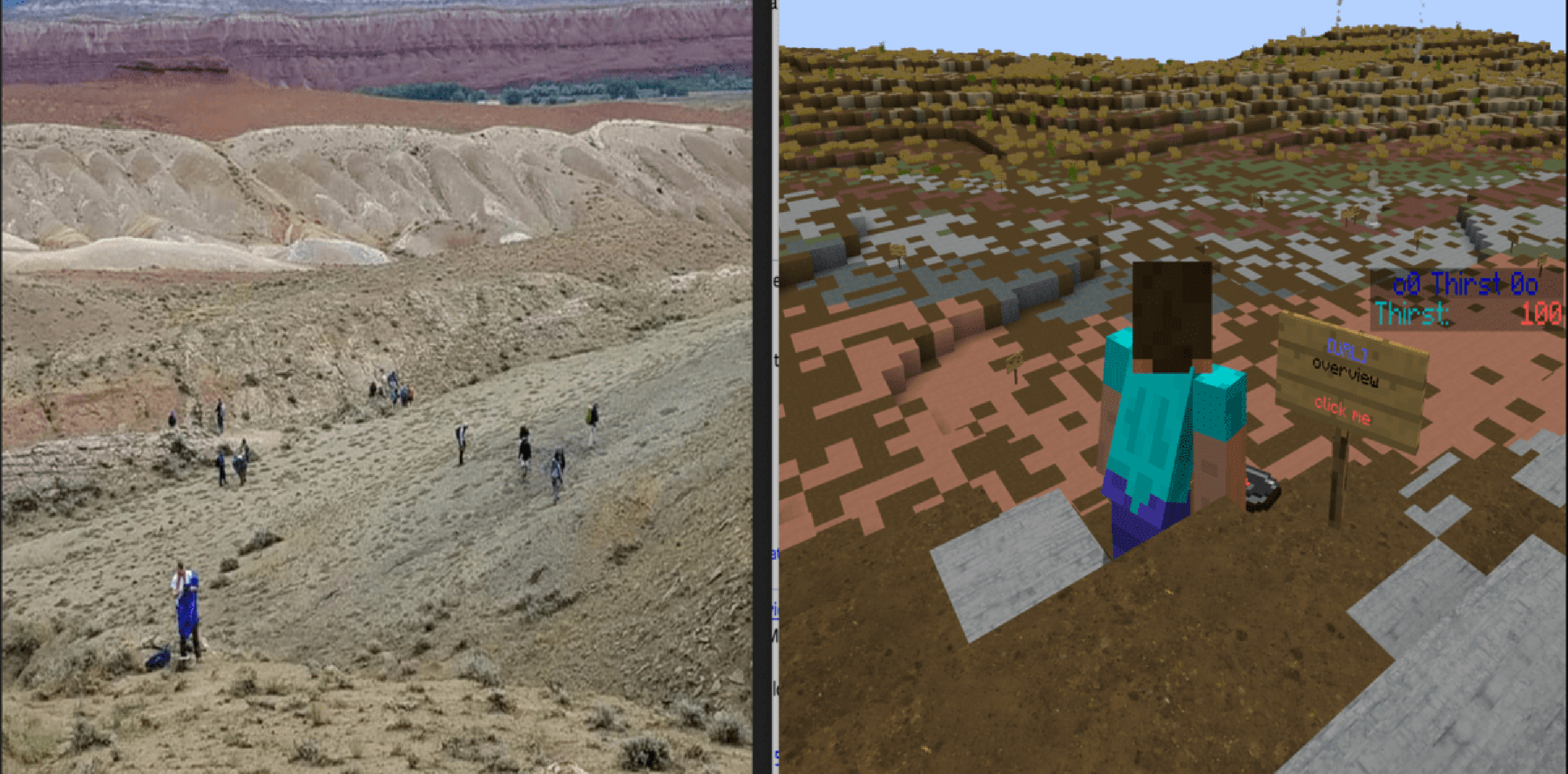Amidst the chaos, confusion and grief of the coronavirus pandemic, Fairmount College of Liberal Arts and Sciences faculty are stretching their teaching skills and using the experience for teachable moments.

Shaunna Millar
Shaunna Millar, clinical professor of social work, teaches the Social Welfare Policy and Analysis class SCWK 717. Including materials about the pandemic allows her students to examine the disproportional impact of COVID-19 on people who are older, health challenged and part of communities of color. Students see how systems meant to support vulnerable populations are affected.
“Students have the opportunity to understand that systems that are under stress during routine times will be more stressed in times of crisis, such as with COVID,” Millar said.
Ellen Terhan, a student in Millar’s class, said the most important thing she’s learned is that although everyone is experiencing personal sacrifices and losses because of the virus, its’ impact is not equal across populations.
“As a disease, COVID-19 has taken a disproportional toll on those most vulnerable in our society, specifically minorities and children living in poverty,” said Teran, a graduate student in social work. “These (impacts) are highlighted by the educational, health and economic effects these populations are experiencing.”
For Alexander Smith, who’s in the same class, it was learning that some of the progress that has been made across the globe is being reversed for the first time in more than 20 years.
“For example, it is estimated that nearly 71 million people are expected to be pushed back into extreme poverty,” Smith said. “This is the first time we’ve seen a rise in global poverty since 1998.”
Several Fairmount College faculty have incorporated content on COVID-19 into their courses. By being introduced to emerging research, current publications and historic events, students have the opportunity to look at the health crisis with the viewpoint of the academic discipline and use their critical thinking and analytical skills to imagine solutions or improvements. Students spend time thinking about changes to recommend for systems or processes.
Teran is especially concerned about students and educators in the Wichita school district.
“It is imperative that our community start now in working to help the education system work efficiently and effectively to meet the needs of the students in our city. The Wichita Public School district is the largest district in the state and reports that 76.5% of its students come from homes of poverty,” Teran said. “Our community must work to find creative ways to ensure that students have access to resources, nutrition and support necessary to help them be successful, even in these unprecedented times. This includes staff and teacher trauma-informed training, recognizing that many students have or will experience significant trauma as a direct result of COVID-19. Educational policy moving forward must allow our local and state educators to have flexibility and resources necessary to help all students succeed.”
Her classmate, Smith, is concerned about the increase in poverty and wants to enhance services at his practicum placement where youth range in age from 6 to 18.
“Some of them come from lower-income homes and may not have access to multiple square meals a day, especially with school being remote now for many of them,” said Smith. “I would love to be able to set up some sort of weekly time where we could either cook a meal for the kids at the office, or send them home with food items, as needed.”
As more becomes known about the pandemic, faculty and students will have many opportunities to learn through real-life applications how to improve systems with lasting effects. See below for a sampling of courses using COVID-19 content.
A sampling of COVID-19 class content
In addition to Millar and her SCWK 717 course, many faculty have incorporated aspects of the COVID-19 pandemic into their course materials. What follows is a sampling of their work.
BIOL 220 Introduction to Microbiology: Dr. Joe Shellhammer regularly covers coronaviruses in general but has spent a significant amount of time teaching about COVID-19, its many strains and their impact on humans and animals. “I used the novel coronavirus and its impact on human health — not just when discussing respiratory diseases, but also when talking about epidemiology, viral properties, viral replication, how viruses trigger acute inflammation in the body, and what happens when that inflammation gets out of control.”
CHEM 666 Special Topics in Biochemistry: Dr. Moriah Beck’s students learned about protein folding in human disease and read current scientific literature to understand how the structure and function of viral envelope proteins in SARS-CoV-2, the virus that causes COVID-19, differ from other flu viruses. “This has allowed them to discover how coronavirus uses different receptors and differs in tissue tropism, which helps explain how this increases the difficulty in treatment.”
GEOL 640 Field Geology: Dr. Will Parcell turned to the computer game Minecraft to give students the field camp experience they would normally have in the Bighorn Basin of Wyoming and Montana during the summer. He used visuals and graphics to recreate the mountainous terrain students normally hike, test and map in person. Weekly introductions to the different areas of the basin included mapping assignments that became more complex and difficult as they went along. To watch a short video featuring Parcell’s reconfigured course, visit https://bit.ly/359M3Y0.
HIST 132 U.S. History Since 1865: Dr. Robin Henry used two books that look at how people find community in challenging times: Willa Cather’s 1922 novel “One of Ours” follows the coming-of-age of Claude Wheeler, a Nebraska farm boy who eventually participates in WWI, and Robert Shilts’s “As the Band Played On,” which deals with health crises in the social and political context of the early years of the HIV/AIDS epidemic. “Through papers and book discussions, I want students to understand how humans, Americans have confronted challenges in the past and found ways to form community, even as they maintain different attitudes, ideas, and perspectives on the events of the day.”
POLS 360 Human Rights: Dr. Doris Chang’s students spent a week discussing potential best practices and policies for balancing the right to privacy of COVID-19 positive individuals and the need to safeguard the health and safety of the general population from getting infected. Students compared and contrasted the pros and cons of various approaches implemented in China, Japan, South Korea and Taiwan with those in the U.S. They also devised potential best practices and policies that would take into account the protection of COVID-19 individuals’ right to privacy while safeguarding the health and safety of others in society.
SOC 111 Introduction to Sociology: Jodie Simon used readings to provide current examples of sociological perspectives on the pandemic. This allowed her to demonstrate how the field of sociology can be used to study the current issues facing society and how norms and changing definitions of deviance have impacted students’ lives. Students also looked at areas of inequality (primarily gender, race and socioeconomic class), as well as responses at the institutional level.
SPAN 221 Spanish for Heritage Speakers: Dr. Rachel Showstack’s students read how COVID-19 has changed the way that access to technology is affecting the dissemination of information about health care and education (particularly to Spanish-speaking Latinos) and why the digital divide is even more significant for the wellbeing of communities during a pandemic. They also considered how COVID-19 affected the Latinx population in Kansas and the role of health care communication in Latinos’ experiences with the pandemic. For their final projects, students completed a Spanish language video that addressed an issue of equity in Latino communities in Kansas and shared it with their target audience.


 Courtesy
Courtesy